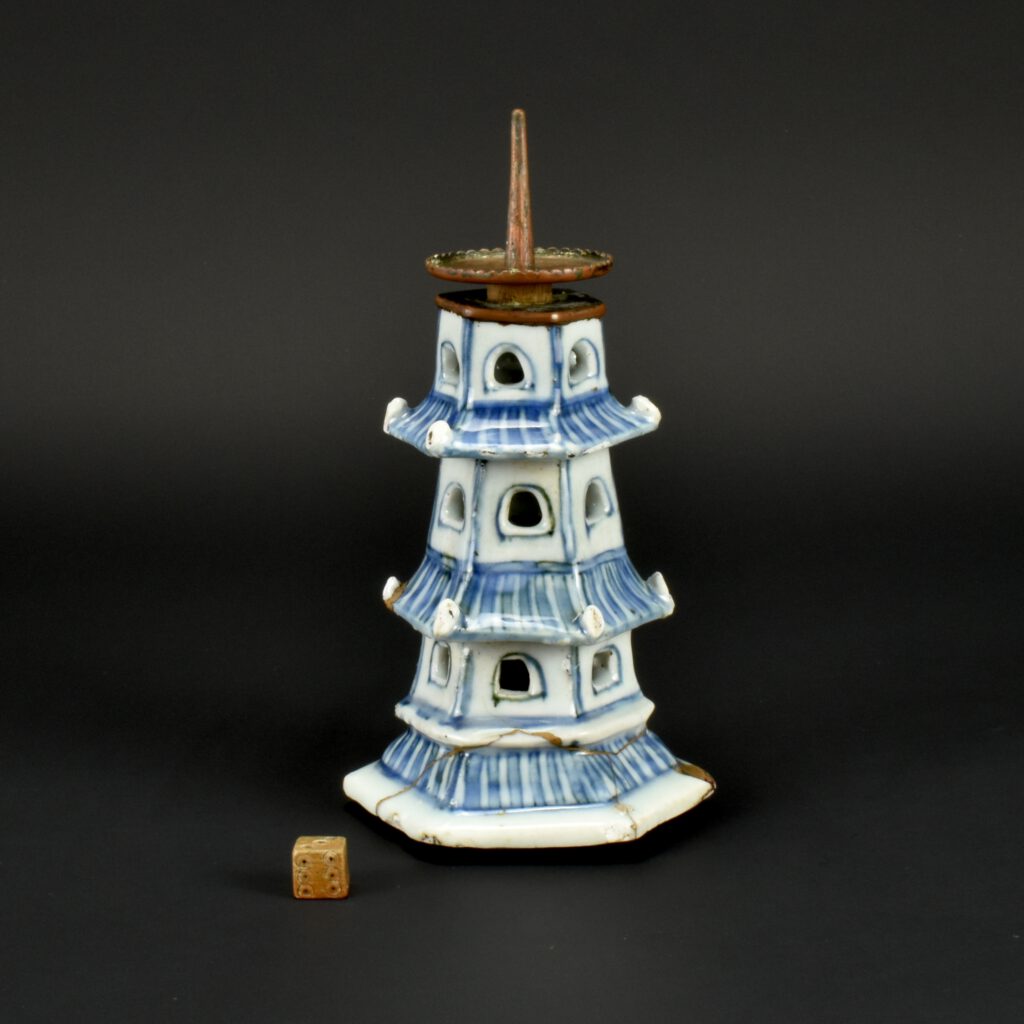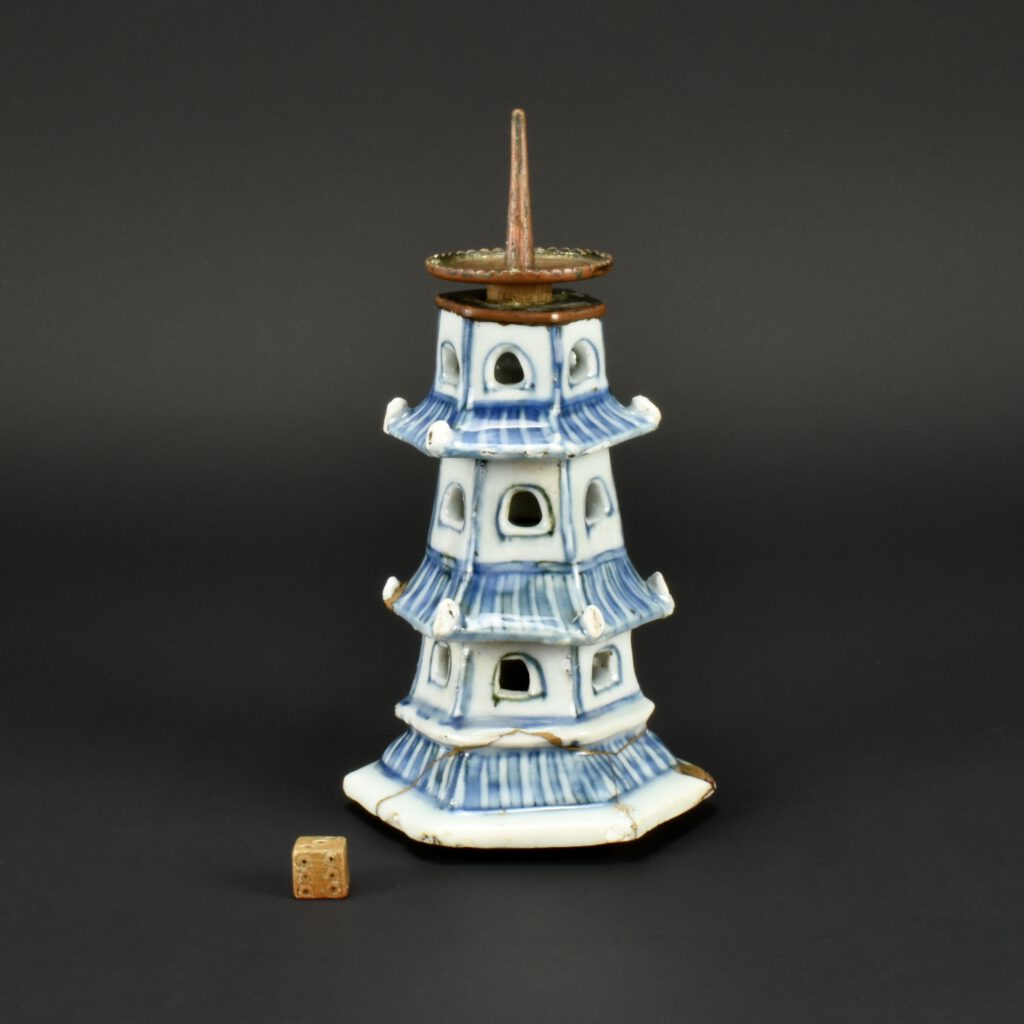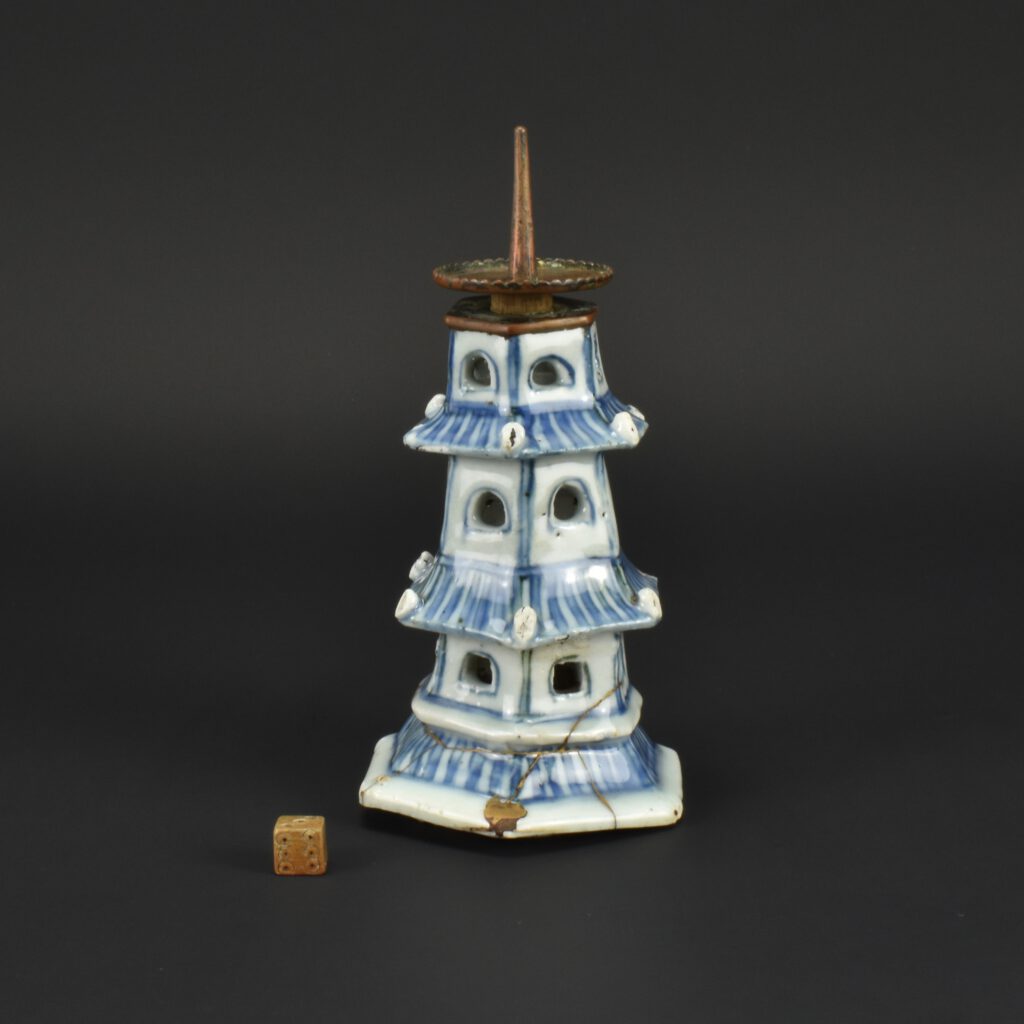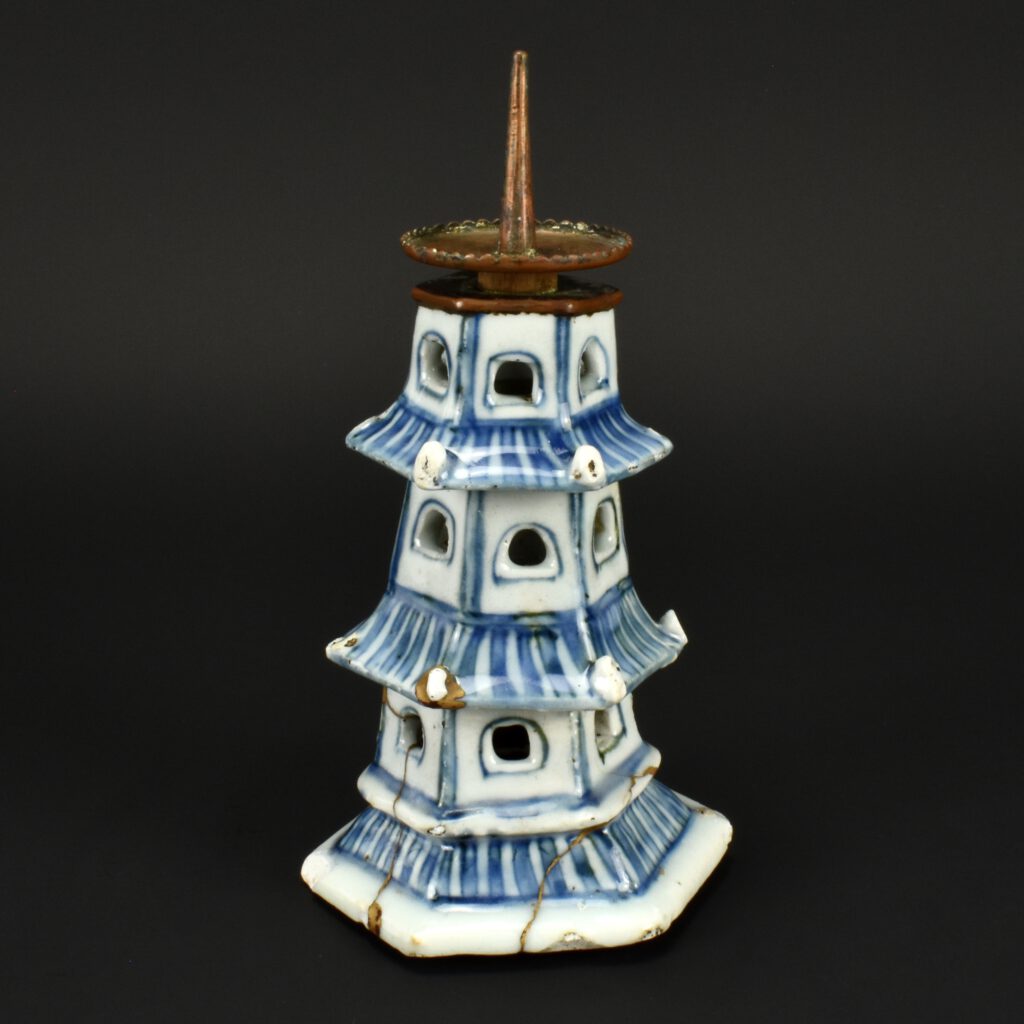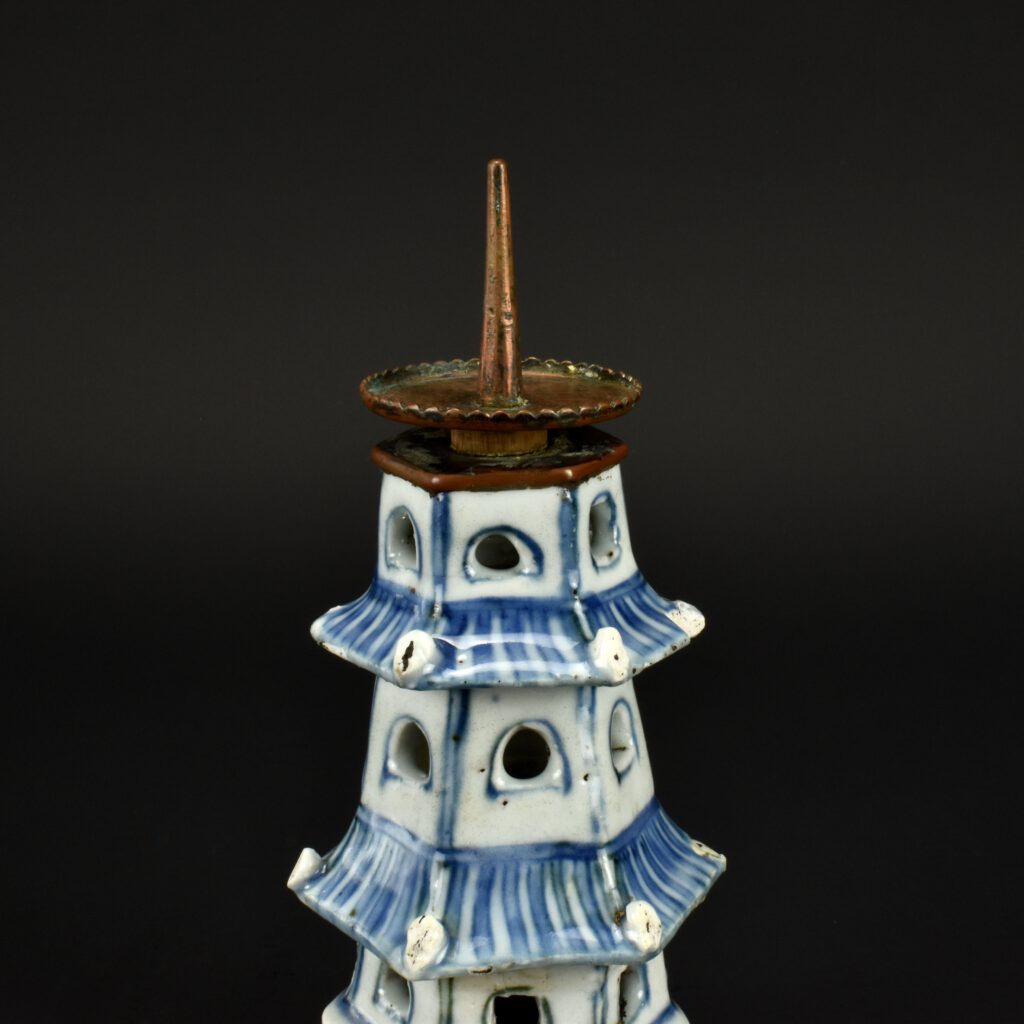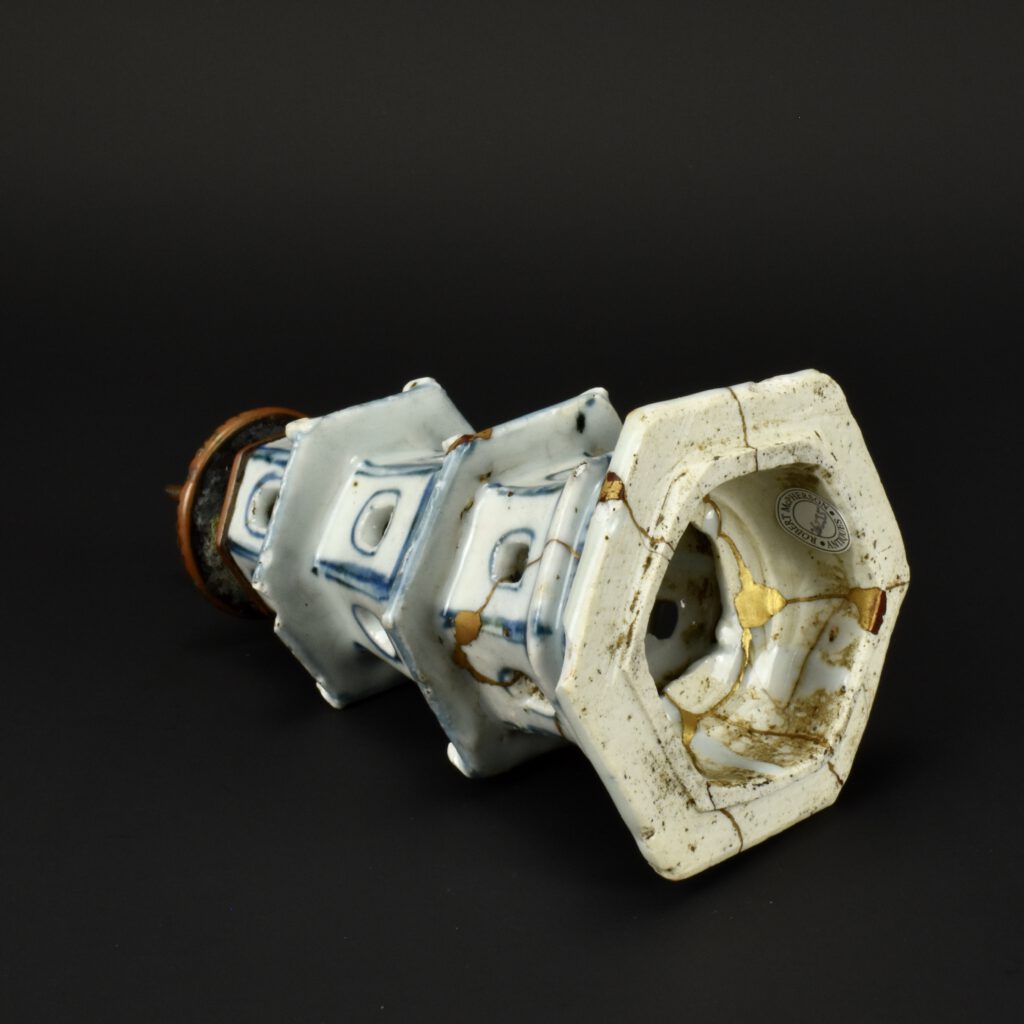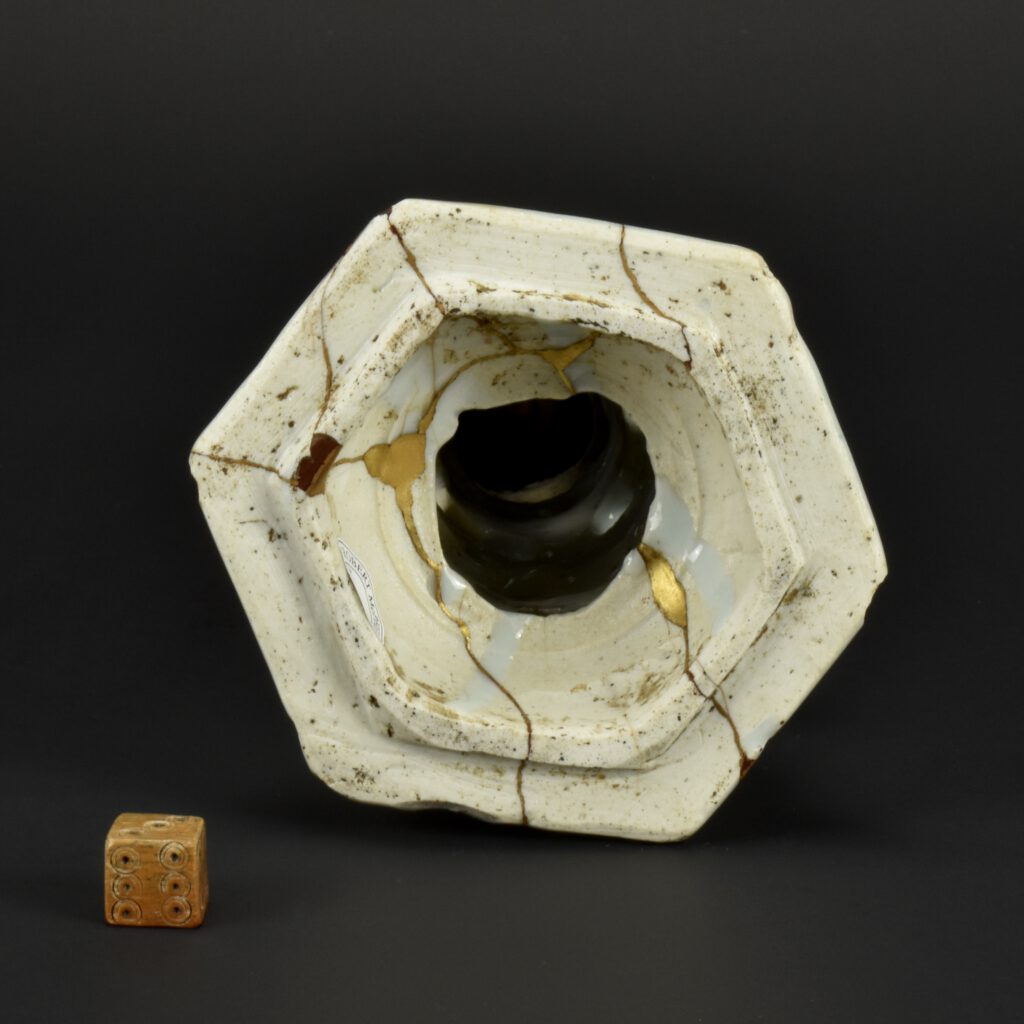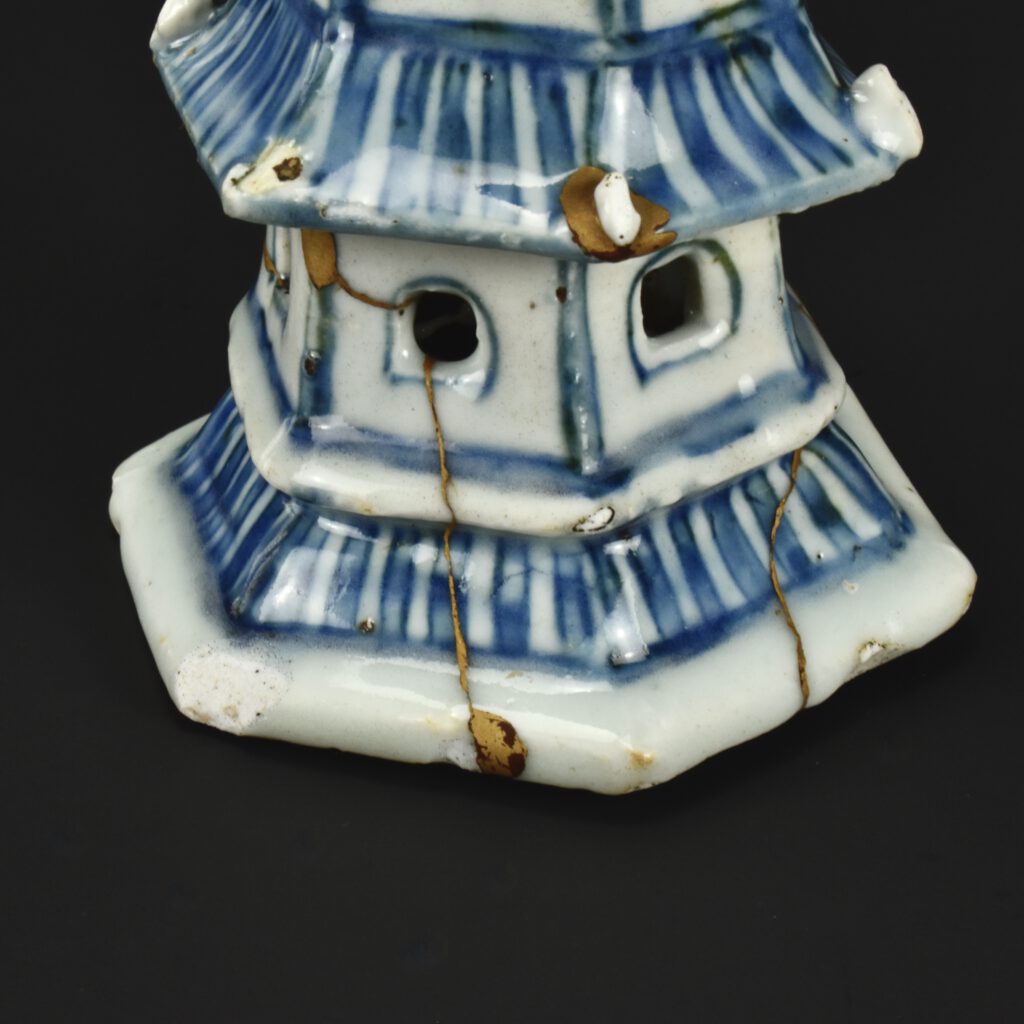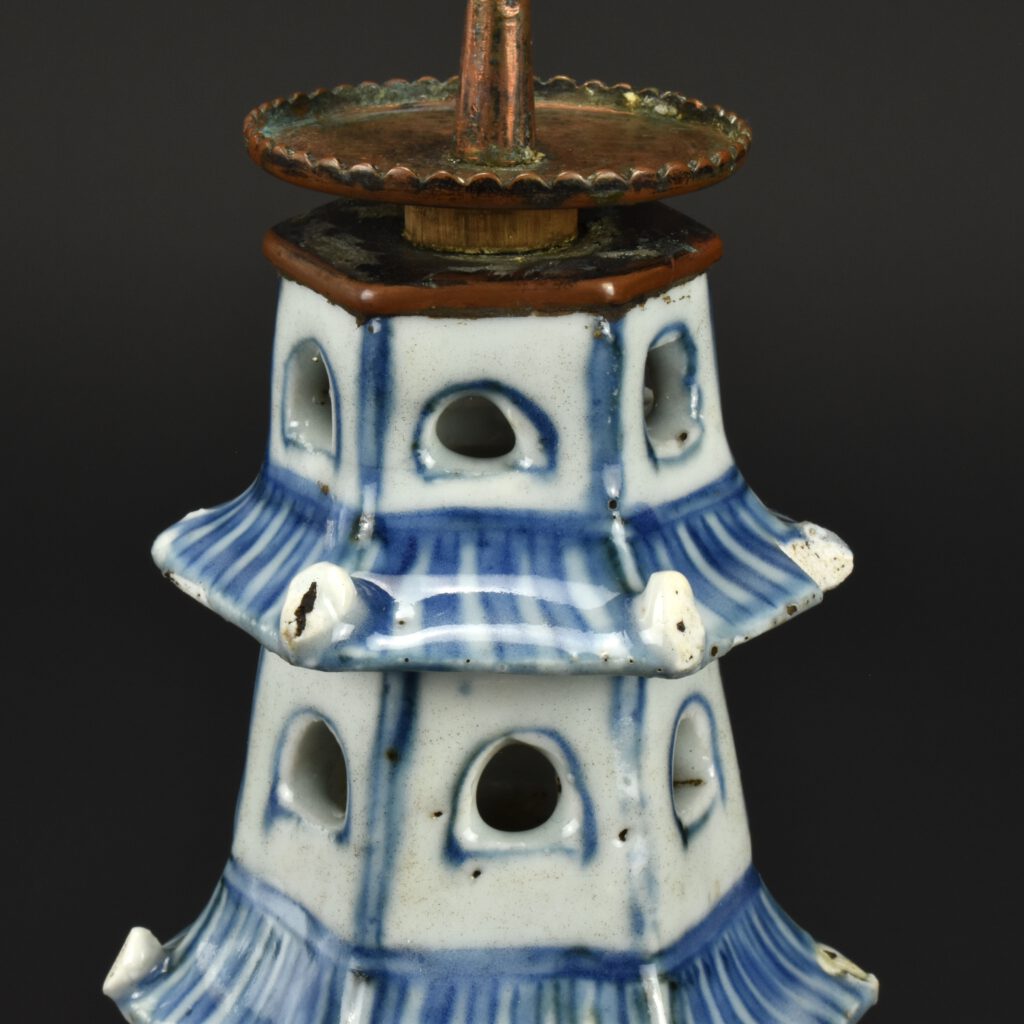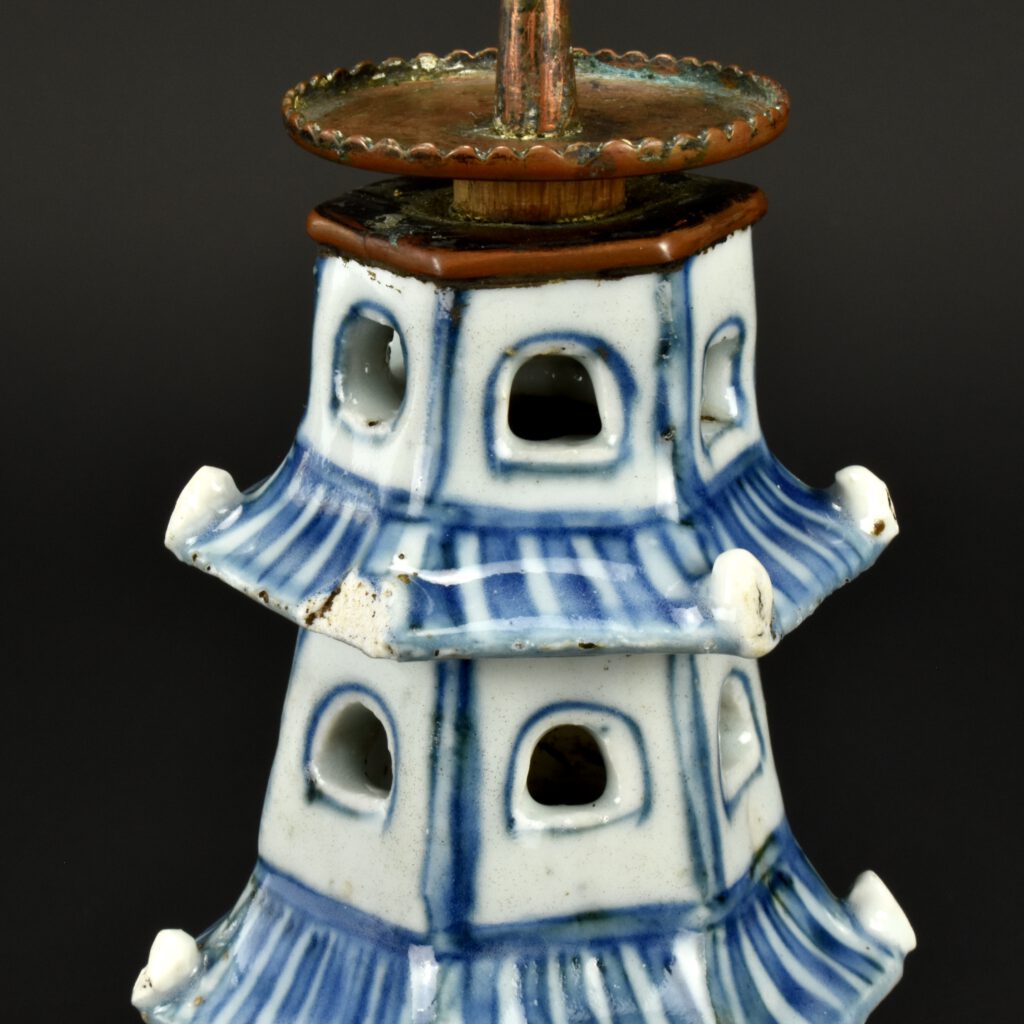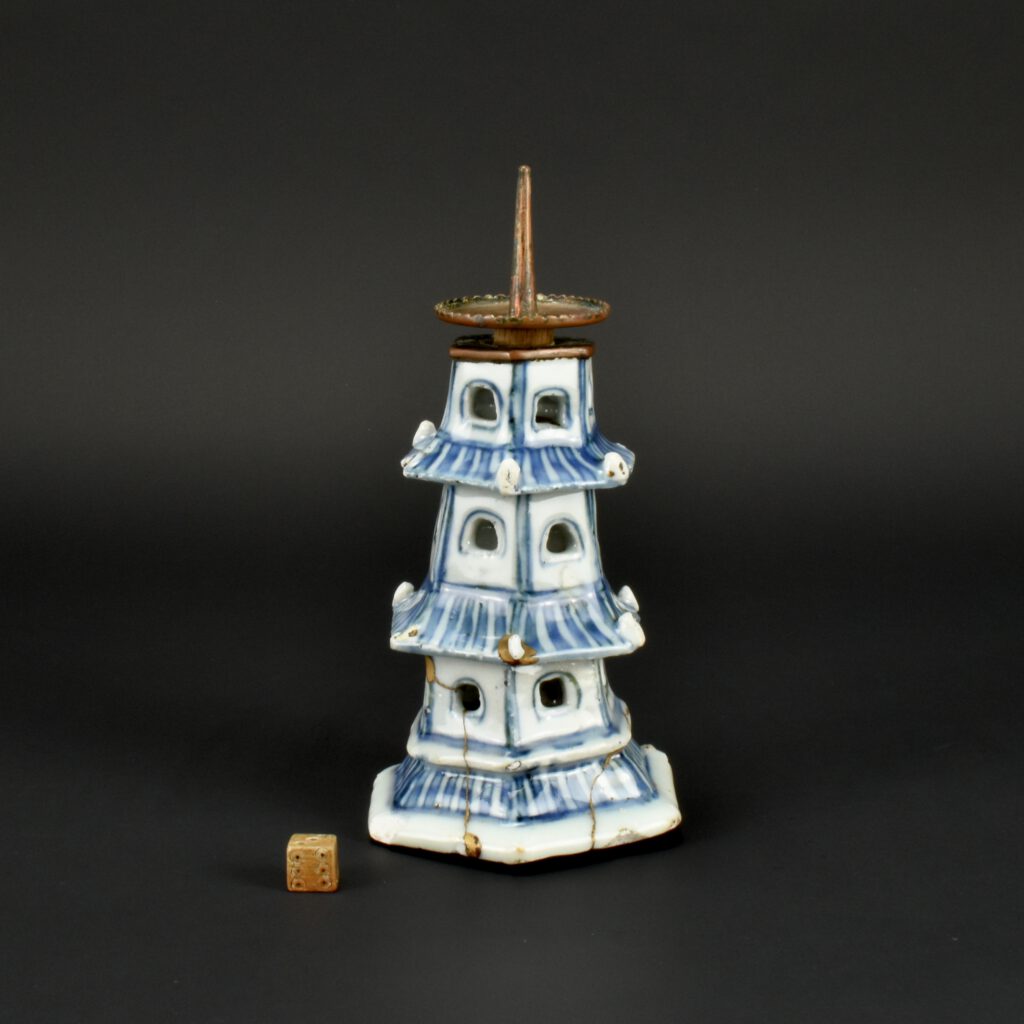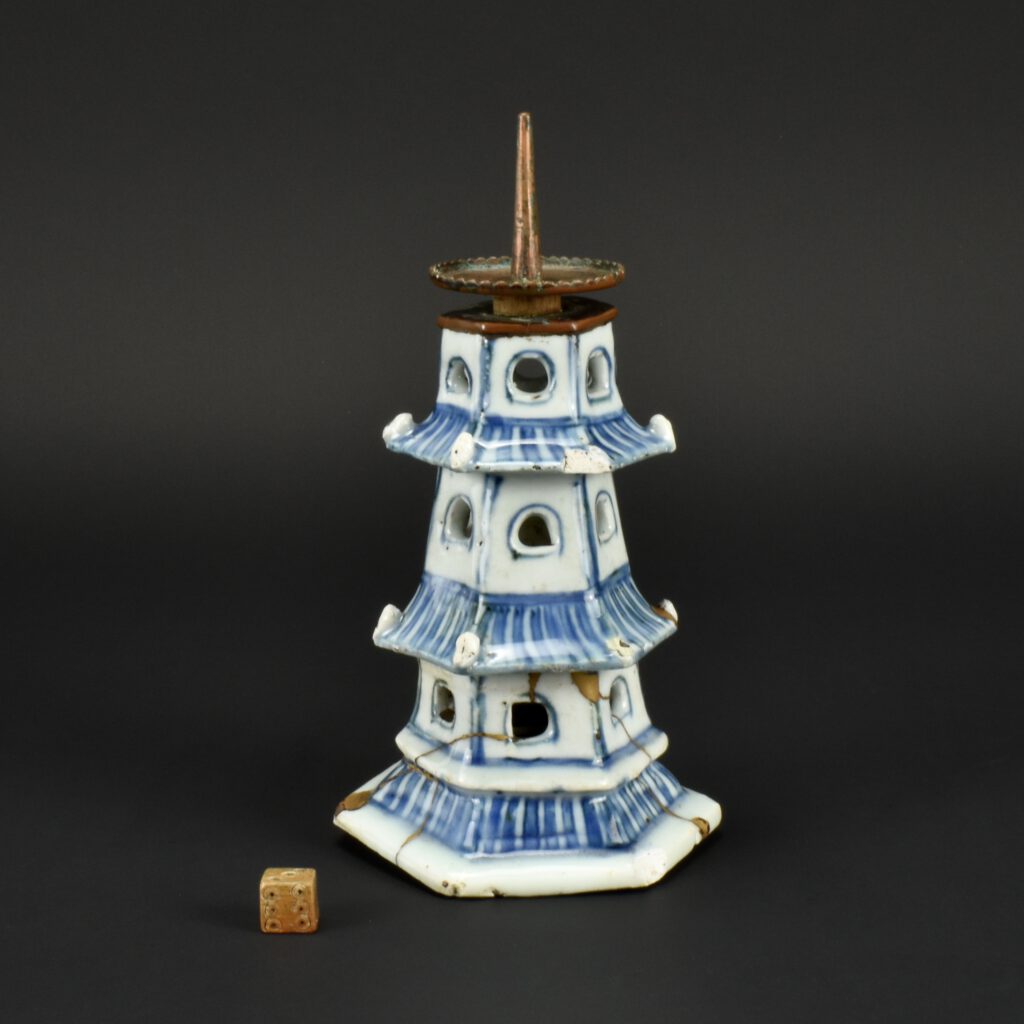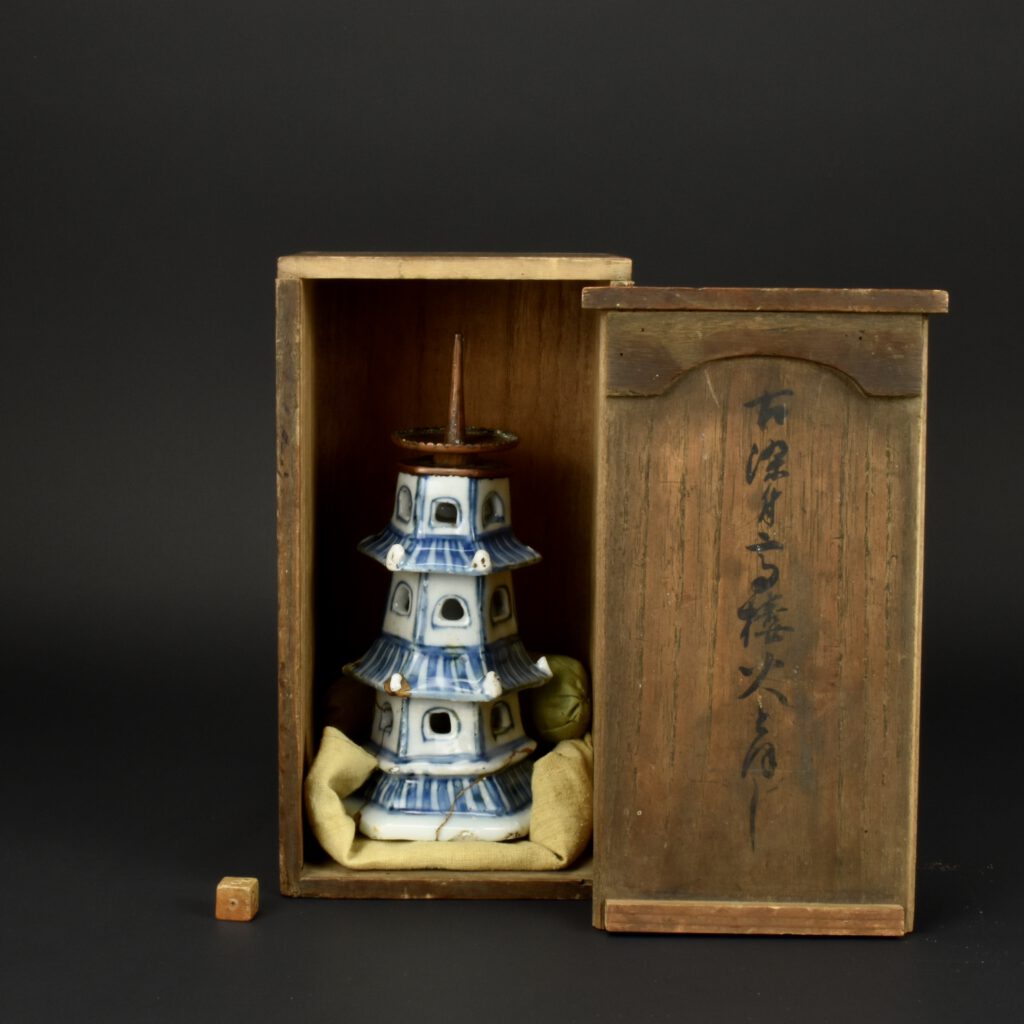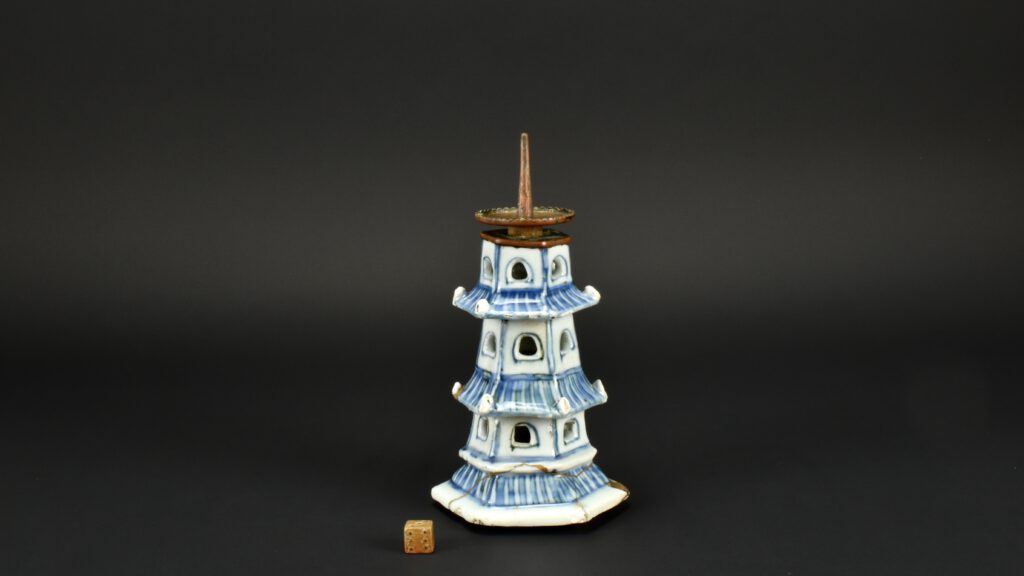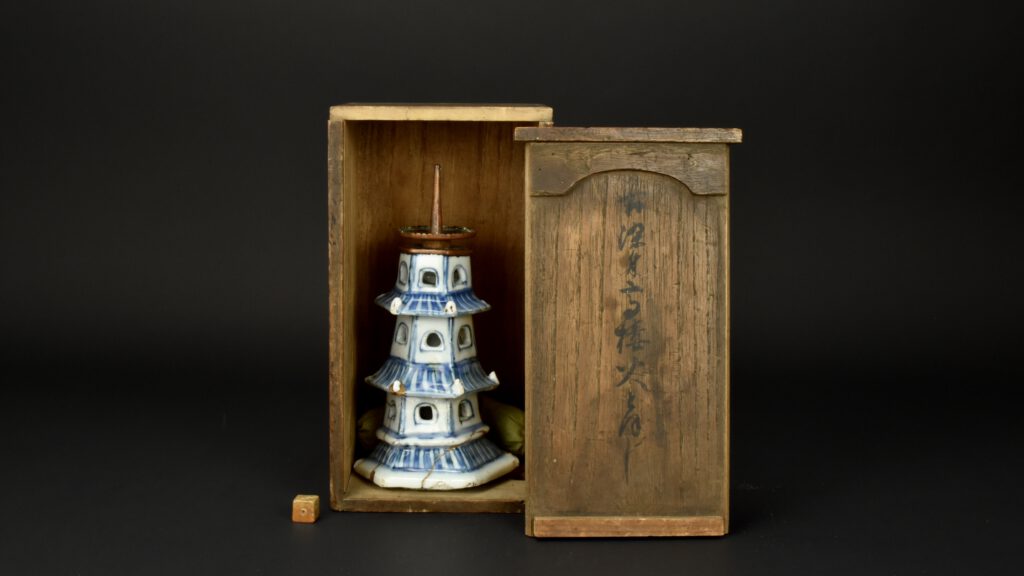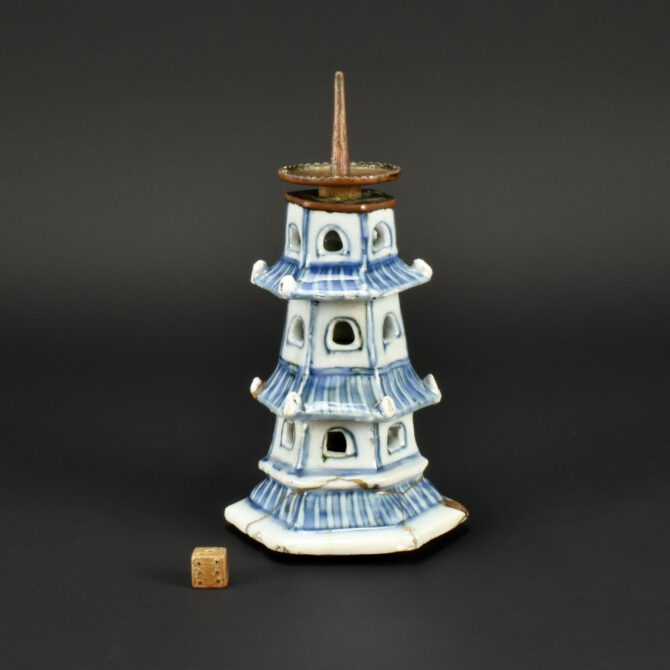
A Rare Late Ming Porcelain Pagoda Shaped Incense Burner Section
A Rare Section of a Late Ming Porcelain Pagoda Shaped Incense Burner, Tianqi to Chongzhen c.1621-1644. This three-story Ming porcelain pagoda originally sat on a broad high base, which showed an edging of tiles like the stripes that represent tiles on the upper section, it would also have had a sloping top with finial. The section we have is unglazed to the base with a ridge, rather like a foot rim, which would have rested inside the large base that would have contained the incense when it was in use. It was clear to me that the section we have was incomplete, and I waited several years to find an illustration of the complete object (see below). It felt wrong to offer ours for sale without understanding what was missing, but thanks to the photograph below it is clear what is missing, the small top and the base. It must have looked dramatic with smoke rising from the arched windows. Our example has been altered to fulfil a different but related function. There is a well-made copper alloy cap linked by a circular section of wooden rod to a broad copper alloy picket candle holder encircled by an upturned foliate pan. This Ming porcelain fragment has been cared for, repaired using the traditional Japanese Kintsugi, ‘golden joinery’, technique also known as Kintsukuroi ‘golden repair’. It is a method of honest repair of repairing broken ceramics with lacquer dusted or mixed with powdered gold, see below for more information and an example of Kintsugi repair from our Sold Archive. It comes with an inscribed and labelled Tomobako. These storage boxes are an important part of Japanese culture, often made of cedar or paulownia wood. To hold the box and the lid closely together a string is used, which is knotted above the lid in a slipknot (himokake 紐掛け). However, this box has a sliding lid, it probably didn’t have string or ribbon as there is no slot for the ribbon to fit in.
See Below For More Photographs and Information.
SOLD
- Condition
- Very poor, the small top and the large base are lacking, the lower section has traditional Japanese Kintsugi repairs. A large chip to one corner and to the corresponding corner of the base, chips and losses to the applied corner decoration.
- Size
- Height 18.6 cm (7.3 inches). Base Width 9.5 cm (3.7 inches).
- Provenance
- Purchased in Japan.
- Stock number
- 26235
- References
- A Very Rare Ming Blue and White Porcelain Complete Pagoda Shaped Incense Burner, Ming 16th - 17th century was Sold in 2023 by Mayuya-Ma & Co.Ltd. Provenance : Tominaga Satoru Collection. Exhibited : Shina Bijutsu Daitenrankai (Grand Exhibition of Chinese Art) Osaka City Museum of Fine Arts, Osaka, 1939) Literature : Kobayashi Taichirō, Sel, Shina Tōji Zusetsu (Chinese Ceramic Catalogue) 1940, pl.54.
Information
A Very Rare Ming Blue and White Porcelain Pagoda Shaped Incense Burner, Ming 16th - 17th century.
Mayuya-Ma & Co.Ltd.
Provenance : Tominaga Satoru Collection.
Exhibited : Shina Bijutsu Daitenrankai (Grand Exhibition of Chinese Art) Osaka City Museum of Fine Arts, Osaka, 1939)
Literature : Kobayashi Taichirō, Sel, Shina Tōji Zusetsu (Chinese Ceramic Catalogue) 1940, pl.54.
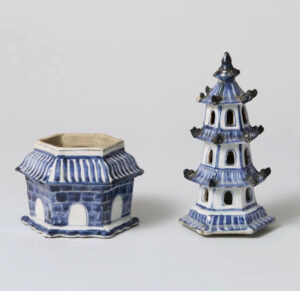
Kintsugi / Gold Joinery.
Kintsugi, ‘golden joinery’, also known as Kintsukuroi ‘golden repair’ is the Japanese technique of repairing broken pottery with lacquer dusted or mixed with powdered gold, silver or platinum. As a philosophy, it treats breakage and repair as part of the history of an object, rather than something to disguise. Laquerware is a longstanding tradition in Japan, and at some point kintsugi may have been combined with maki-e as a replacement for other ceramic repair techniques. One theory is that kintsugi may have originated when Japanese shogan Ashikaga sent a damaged Chinese teabowlback to China for repairs in the late 15th century. When it was returned, repaired with ugly metal staples, it may have prompted Japanese craftsmen to look for a more aesthetic means of repair. Collectors became so enamored with the new art that some were accused of deliberately smashing valuable pottery so it could be repaired with the gold seams of kintsugi. Kintsugi became closely associated with ceramic vessels used for chanoyu (Japanese tea ceremony). While the process is associated with Japanese craftsmen, the technique was also applied to ceramic pieces of other origins including China, Vietnam, and Korea.
A Rare Korean Buncheong ware pottery Mishima shiooke chawan, 16th or 17th century, from the Ulrich Vollmer Collection. Perhaps made for the Japanese market. This Joseon dynasty (1392-1910) teabowl is wheel-thrown stoneware with stamped, incised and slip-filled decoration and has a pale green-grey glaze. It is extensively repaired using the Kintsugi technique and comes with a wooden box.
Kintsugi Repaired Bowl.
Robert McPherson Antiques - Sold Archive - 24486
A Rare Korean Buncheong Stoneware Teabowl, 16th or 17th Century
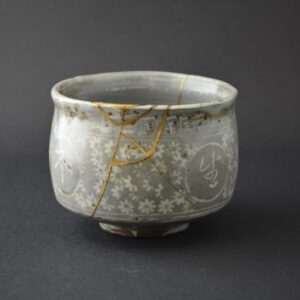
A Rare Korean Buncheong ware pottery Mishima shiooke chawan, 16th or 17th century, from the Ulrich Vollmer Collection. Perhaps made for the Japanese market. This Joseon dynasty (1392-1910) teabowl is wheel-thrown stoneware with stamped, incised and slip-filled decoration and has a pale green-grey glaze. It is extensively repaired using the Kintsugi technique and comes with a wooden box.
SOLD
Condition
It is extensively repaired using the Kintsugi technique.
Size
Diameter : 9.8cm (4 cm)
Provenance
The Ulrich Vollmer Collection of Japanese Pottery and related objects.
Stock number
24486
References
Published and Exhibited : Momoyama-Keramik Und Ihr Einfluss Auf Die Gegenwart (Various authors, Gurdrun-Esters for the Keramion Foundation, Frechen, Germany, 2011. ISBN 978-3-94005-6-8.) page 33, plate 35.
